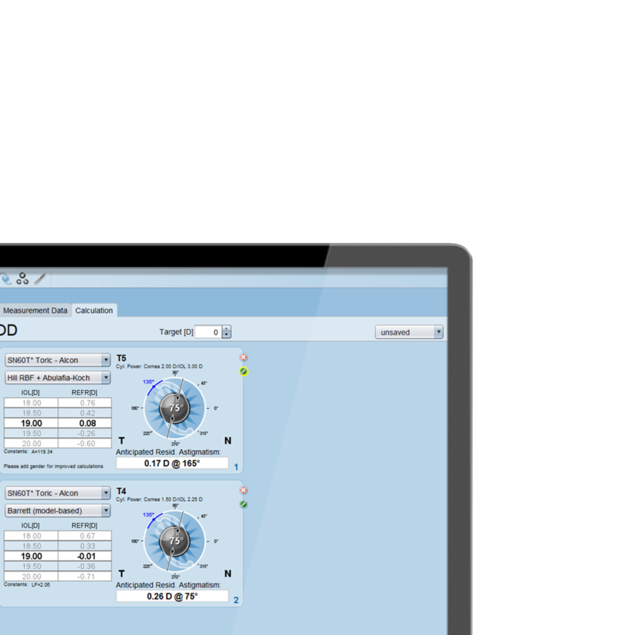Standard IOL calculations provide good results in average eyes. However, they often fail in short and long eyes, as well as eyes with special anatomic features, as they tend to misinterpret lens position in such cases. To enable excellent refractive results with any patient anatomy, EyeSuite IOL features latest generation IOL calculation formulae, i.e., Barrett Universal II and Olsen. For improved IOL prediction, they include anterior chamber depth (ACD) and lens thickness (LT) in their calculation besides the standard axial length measurements and K readings.

